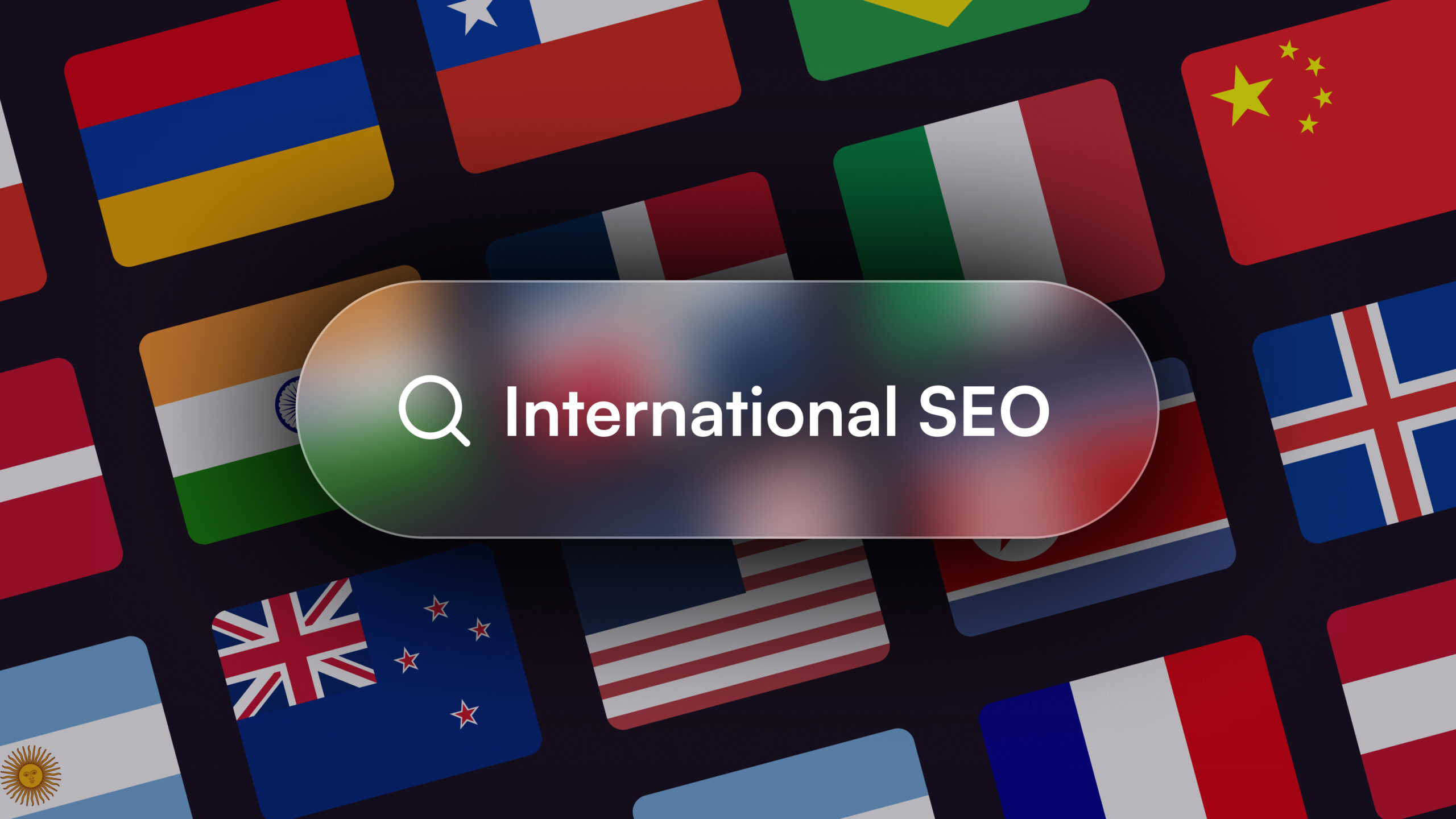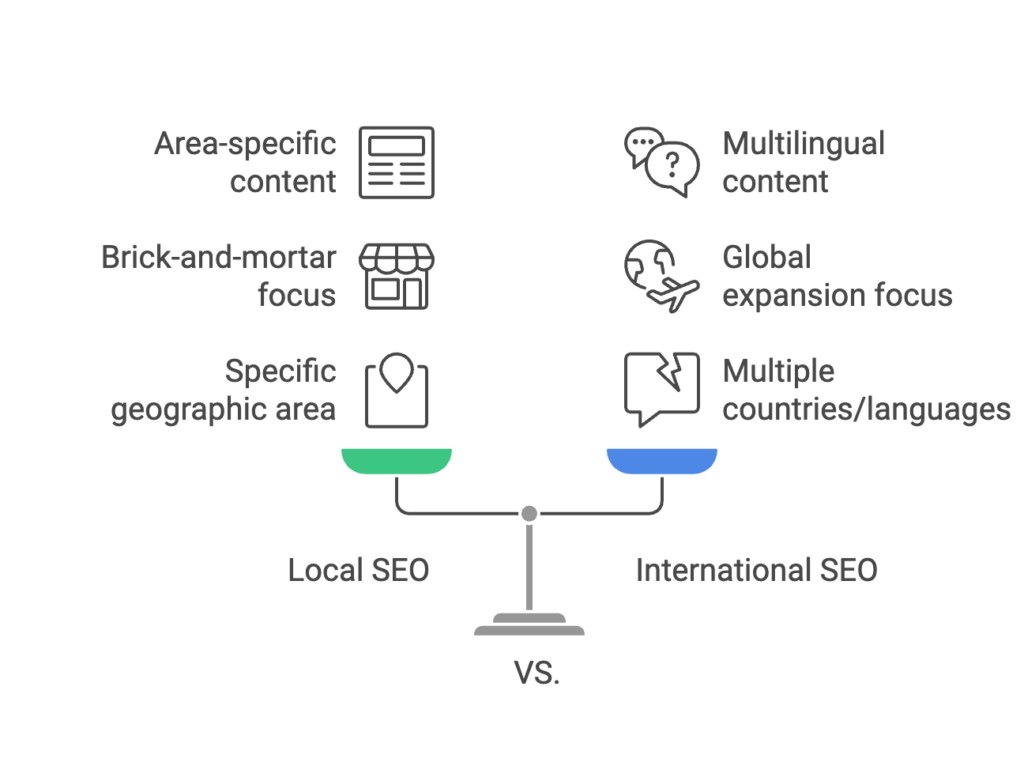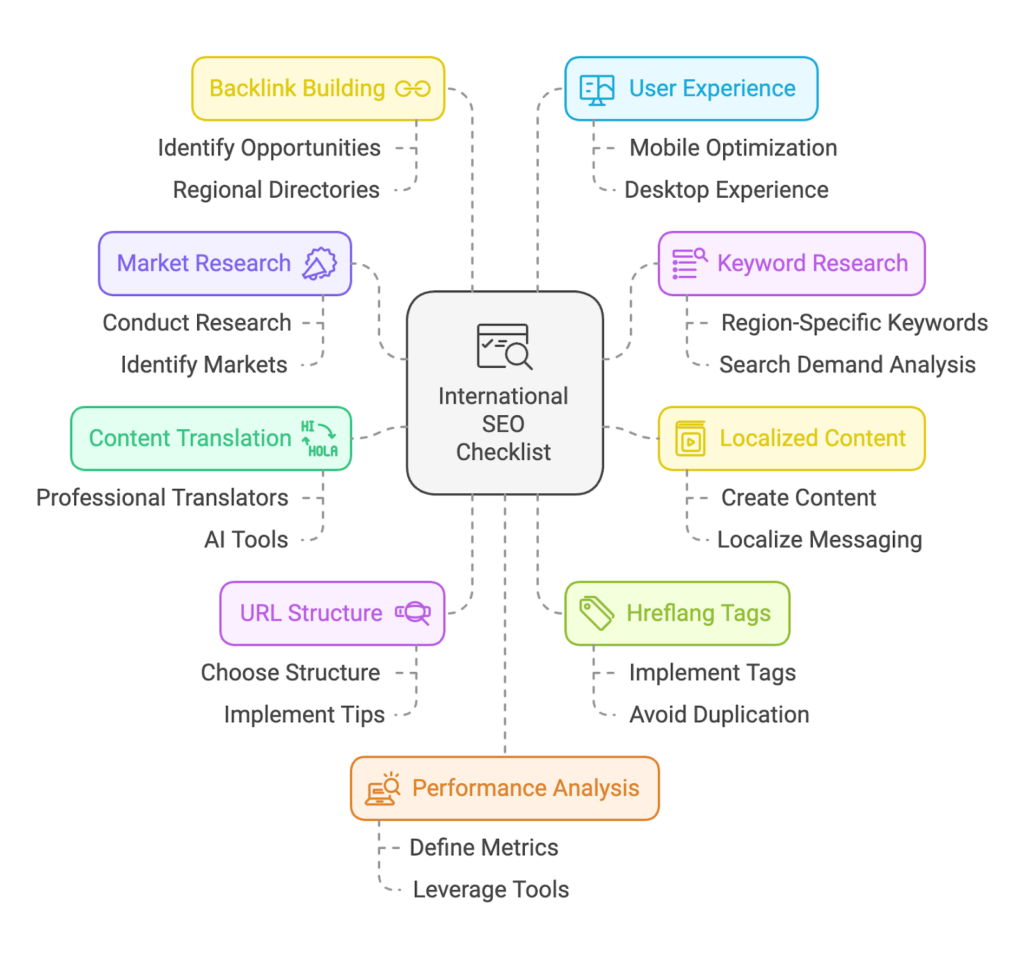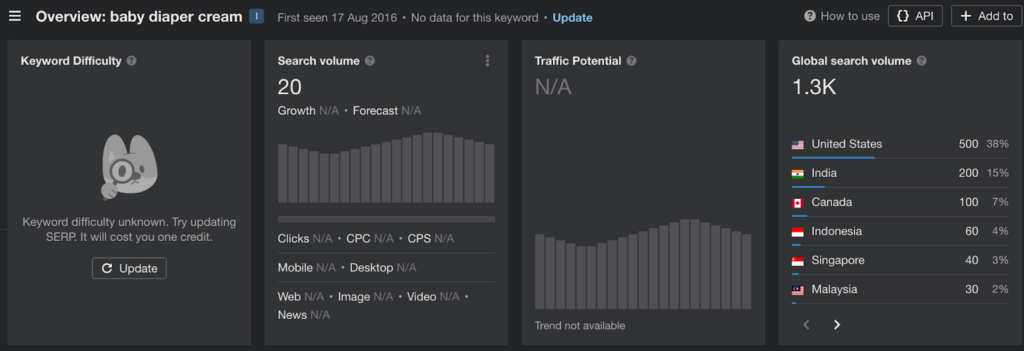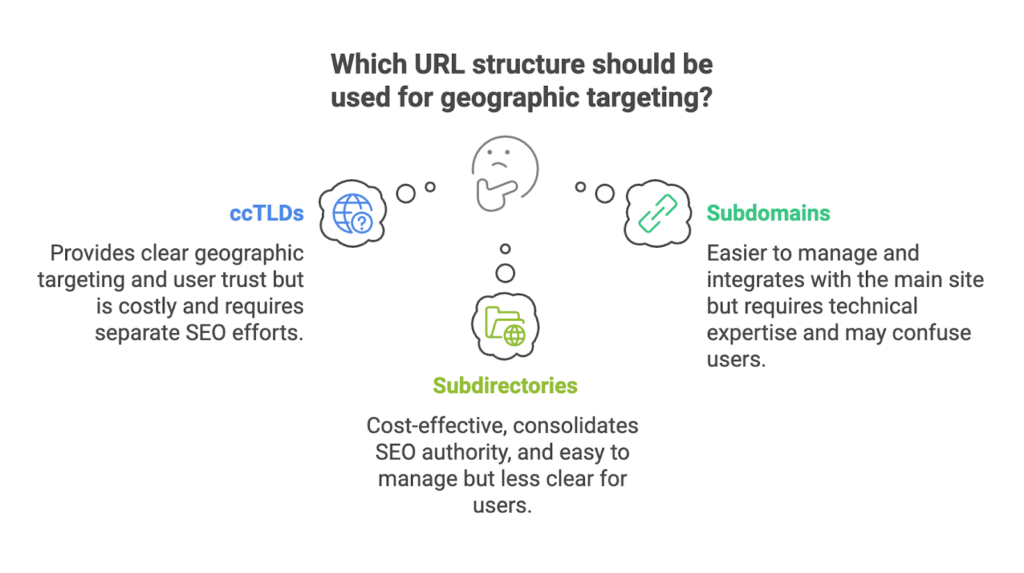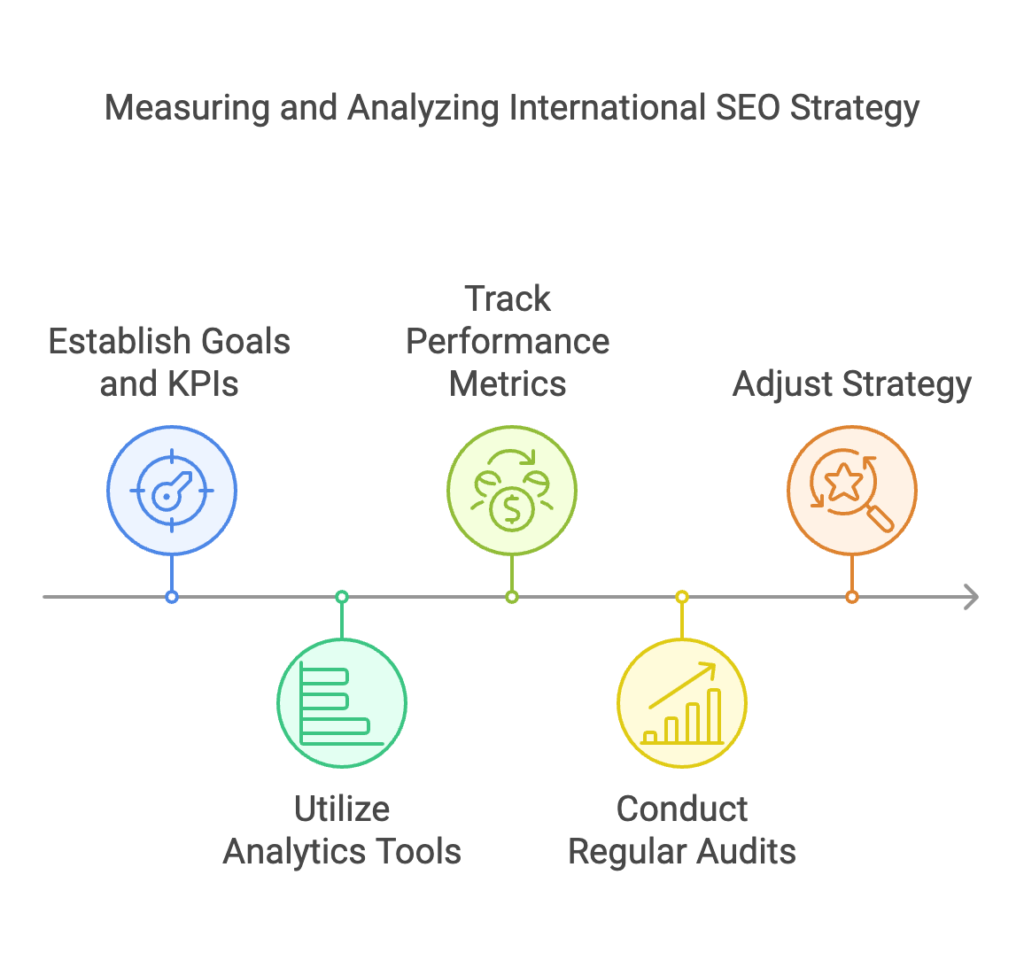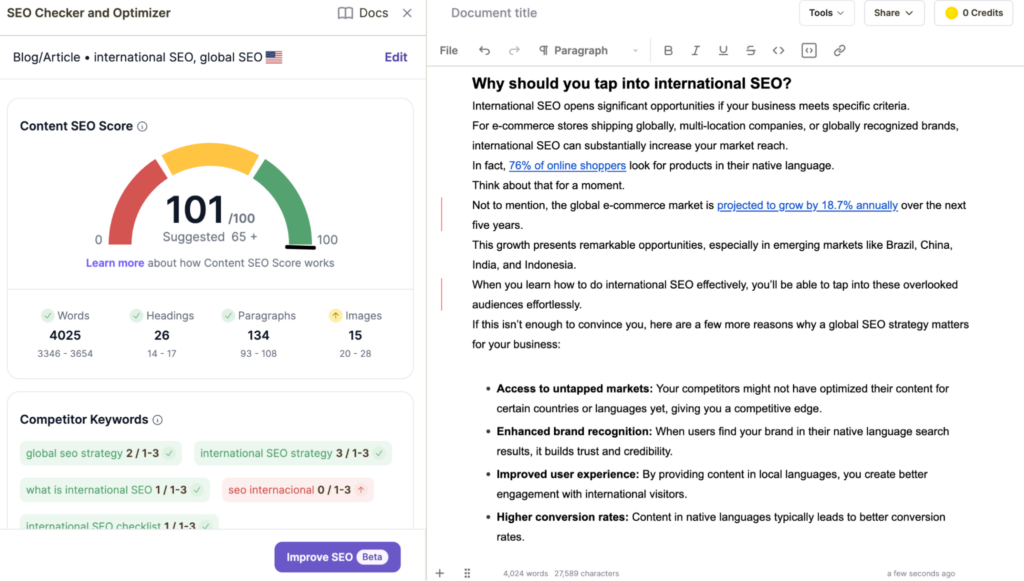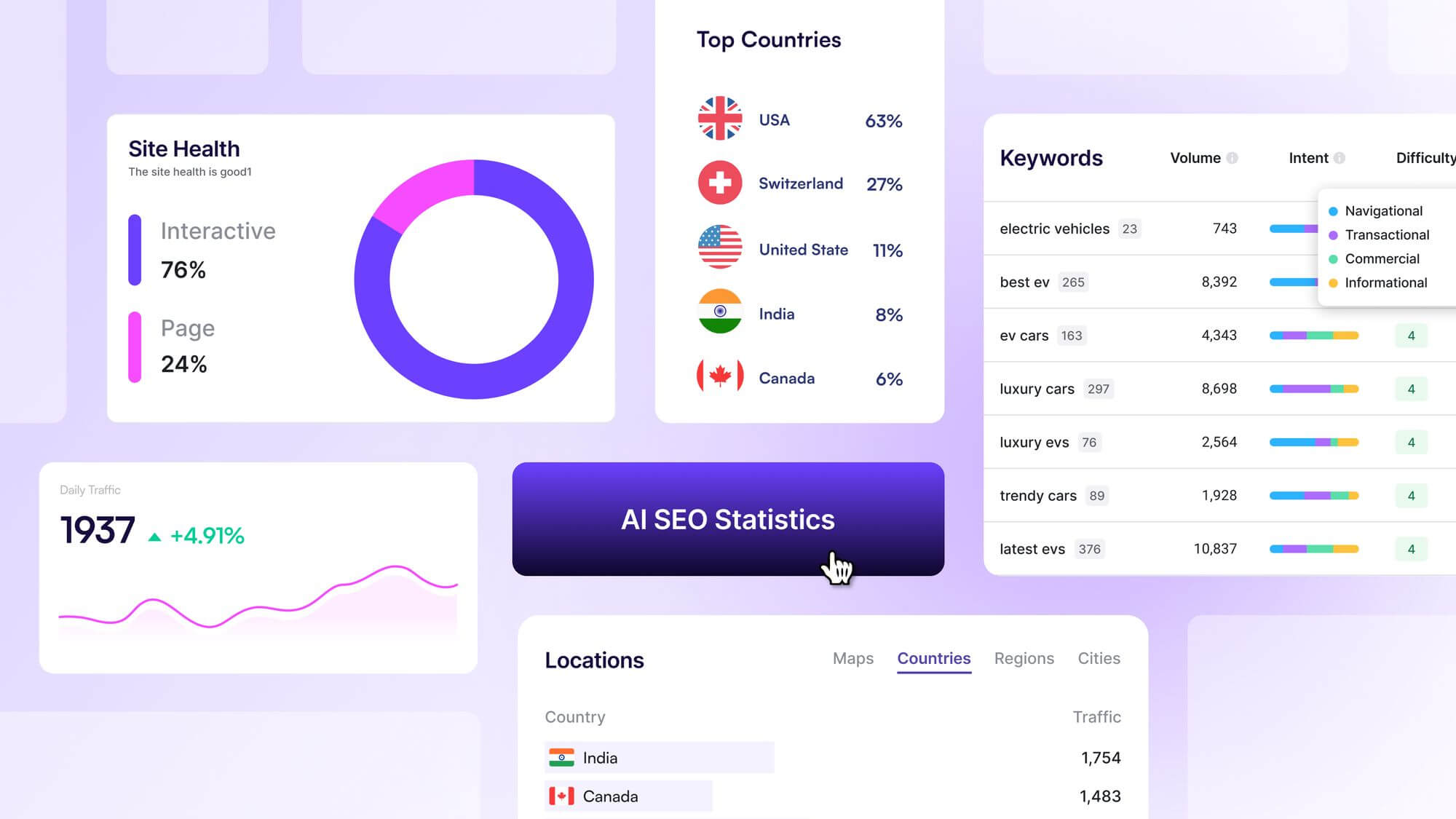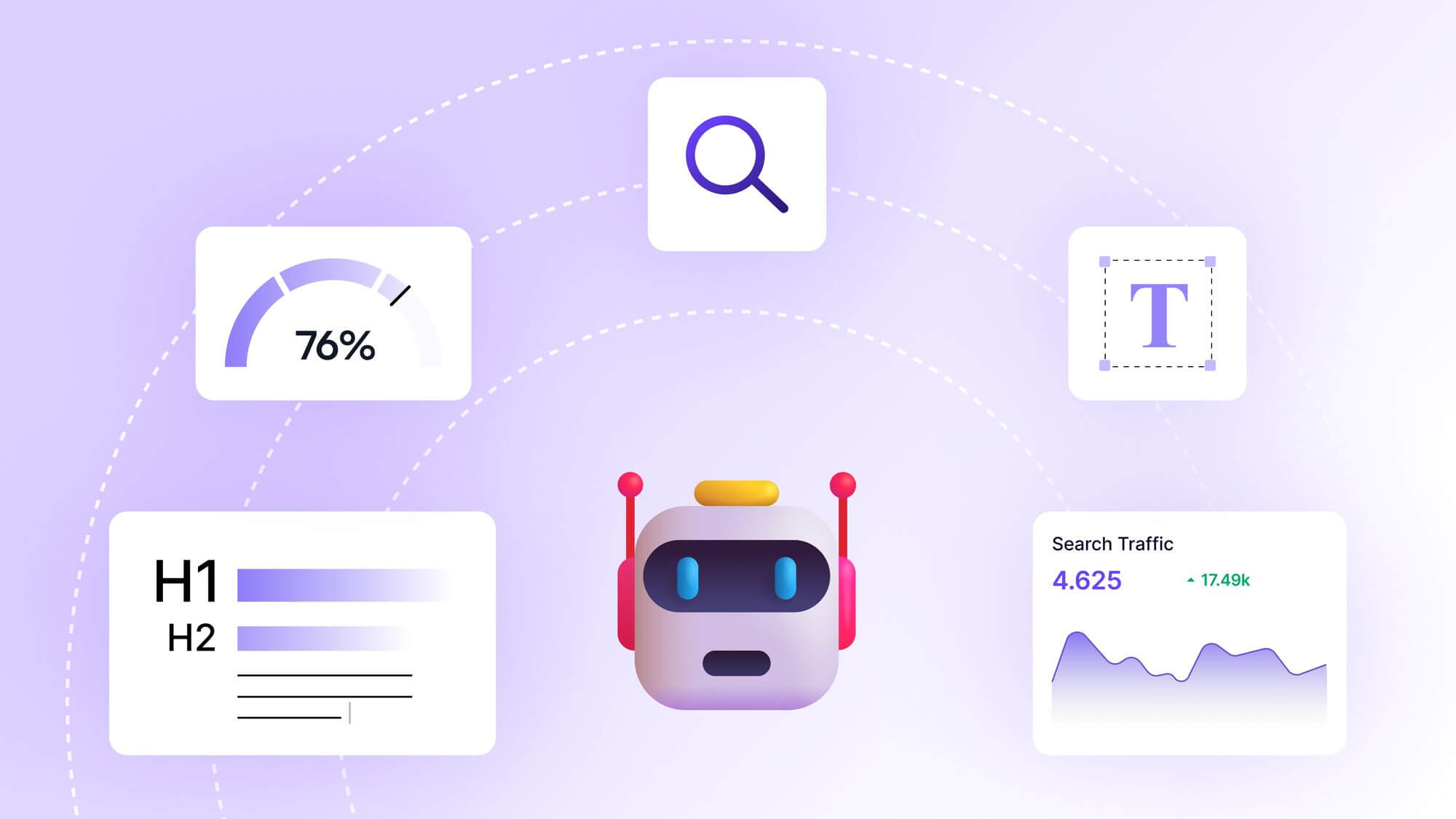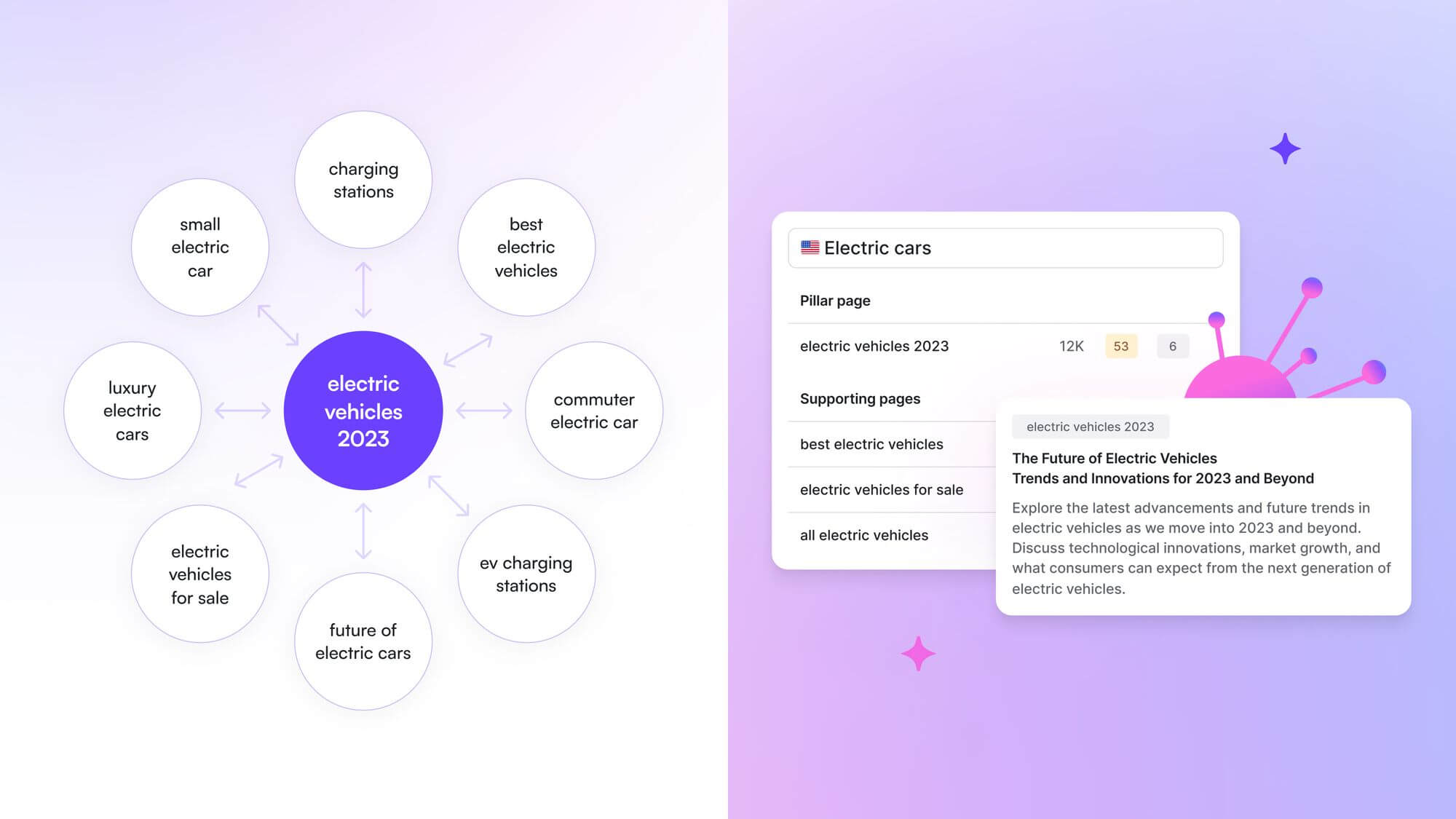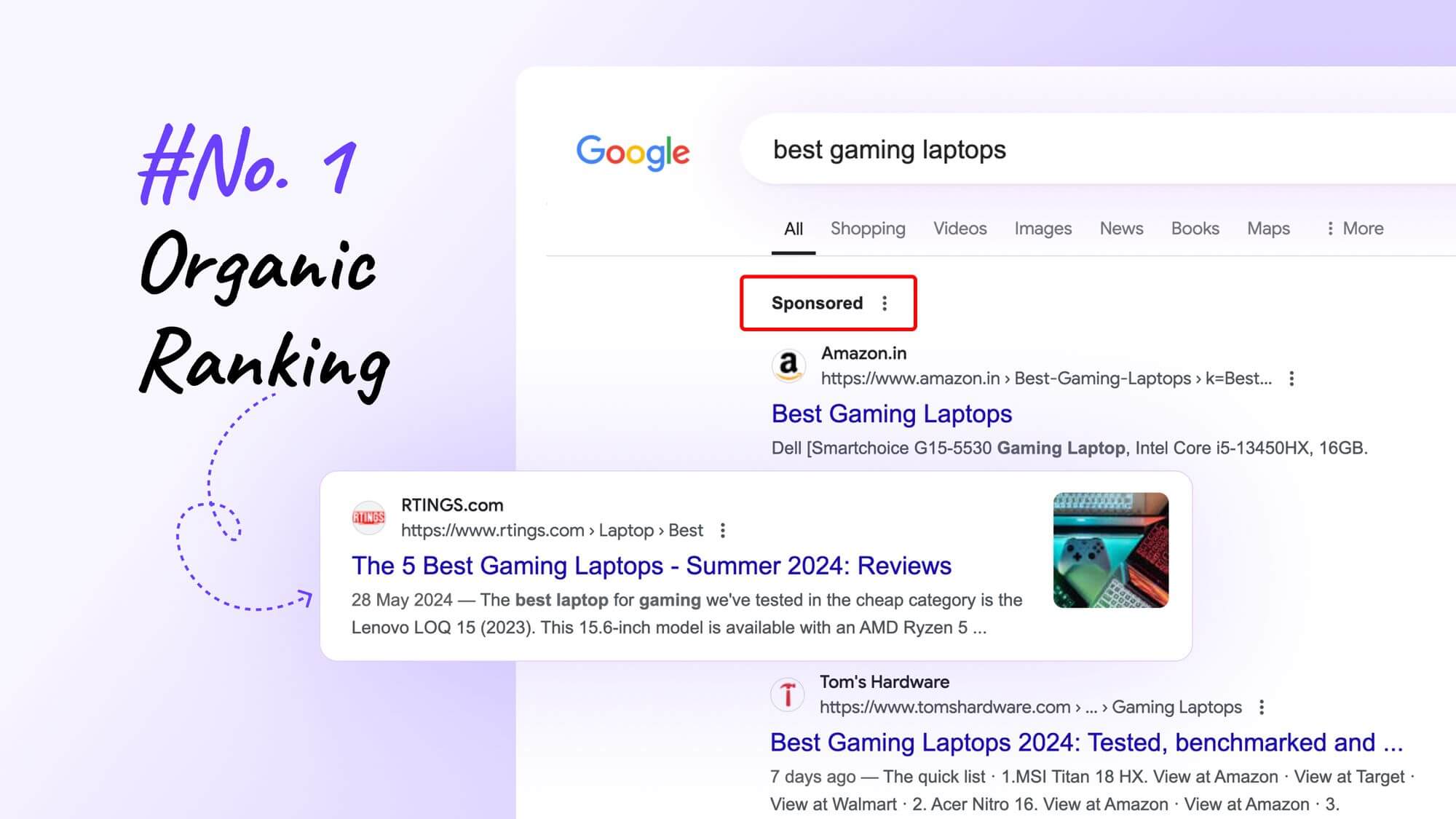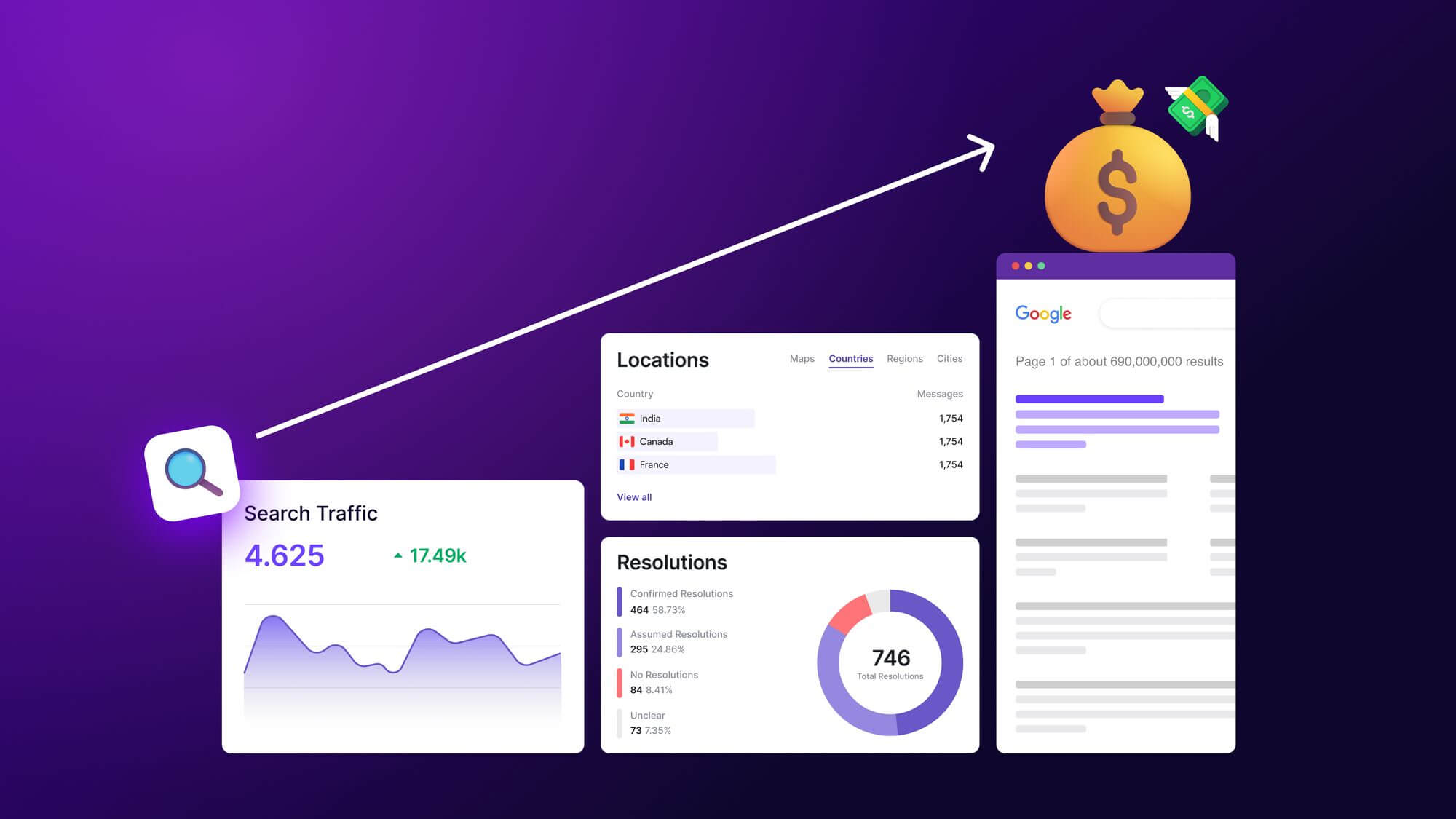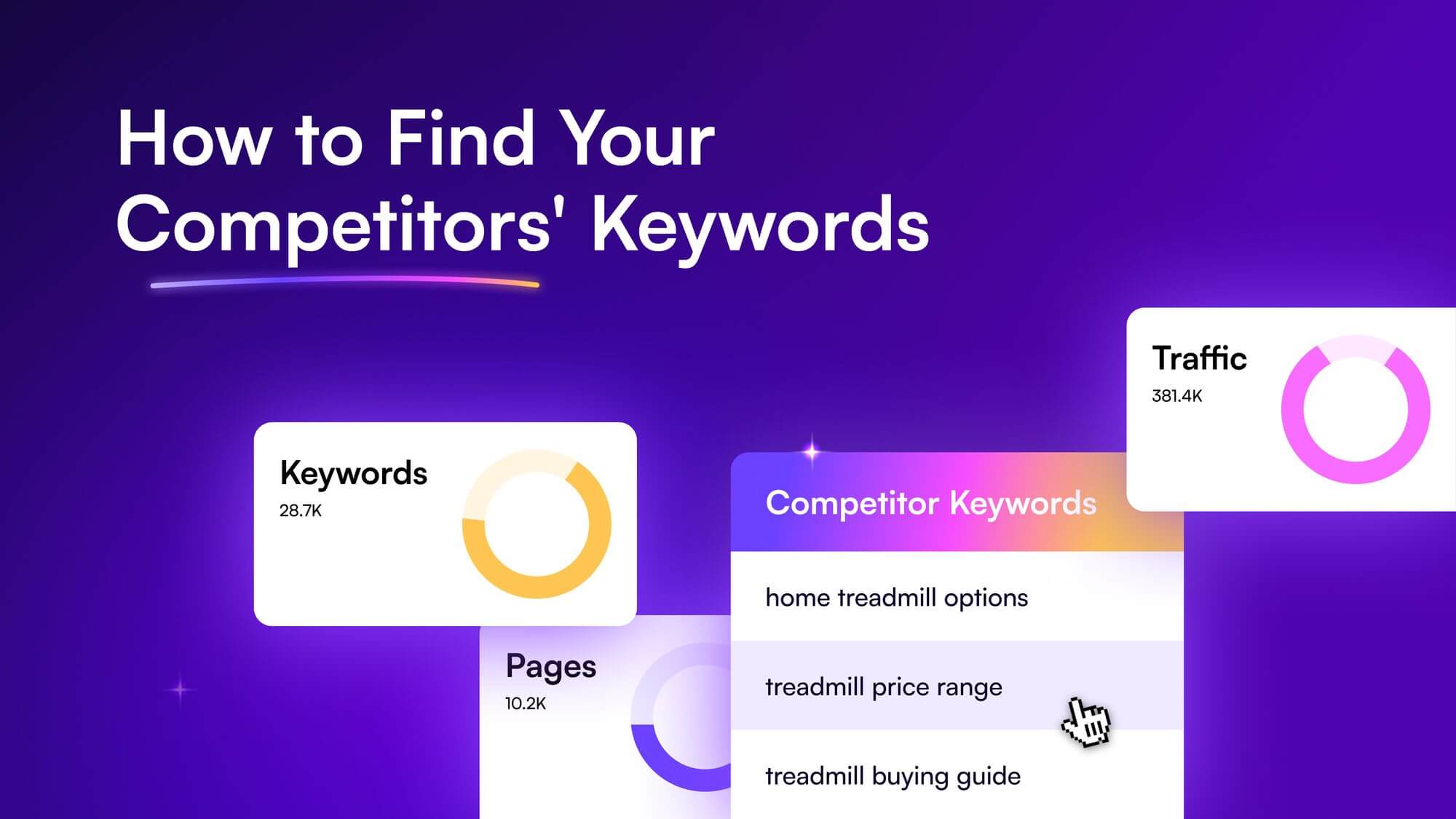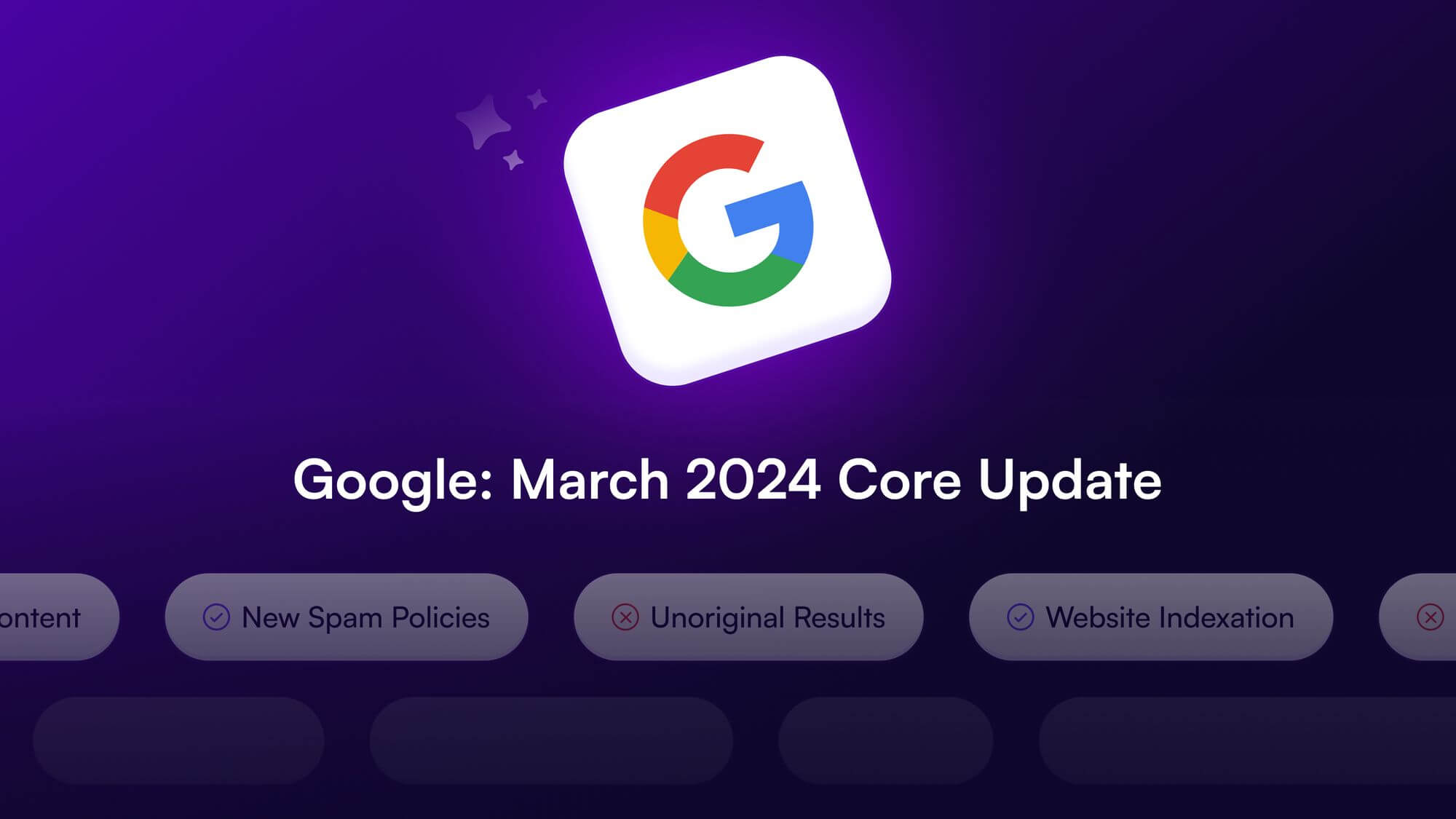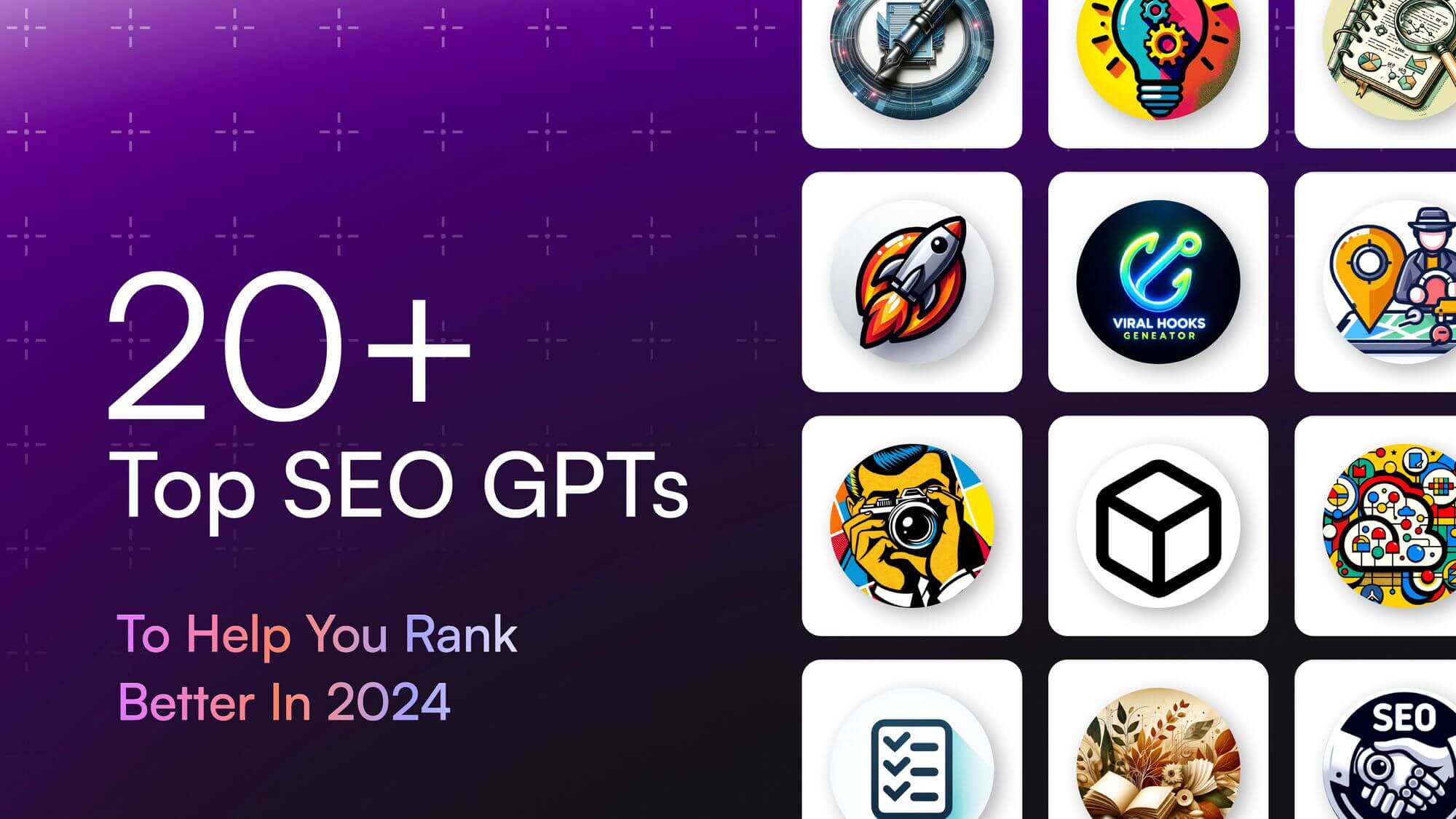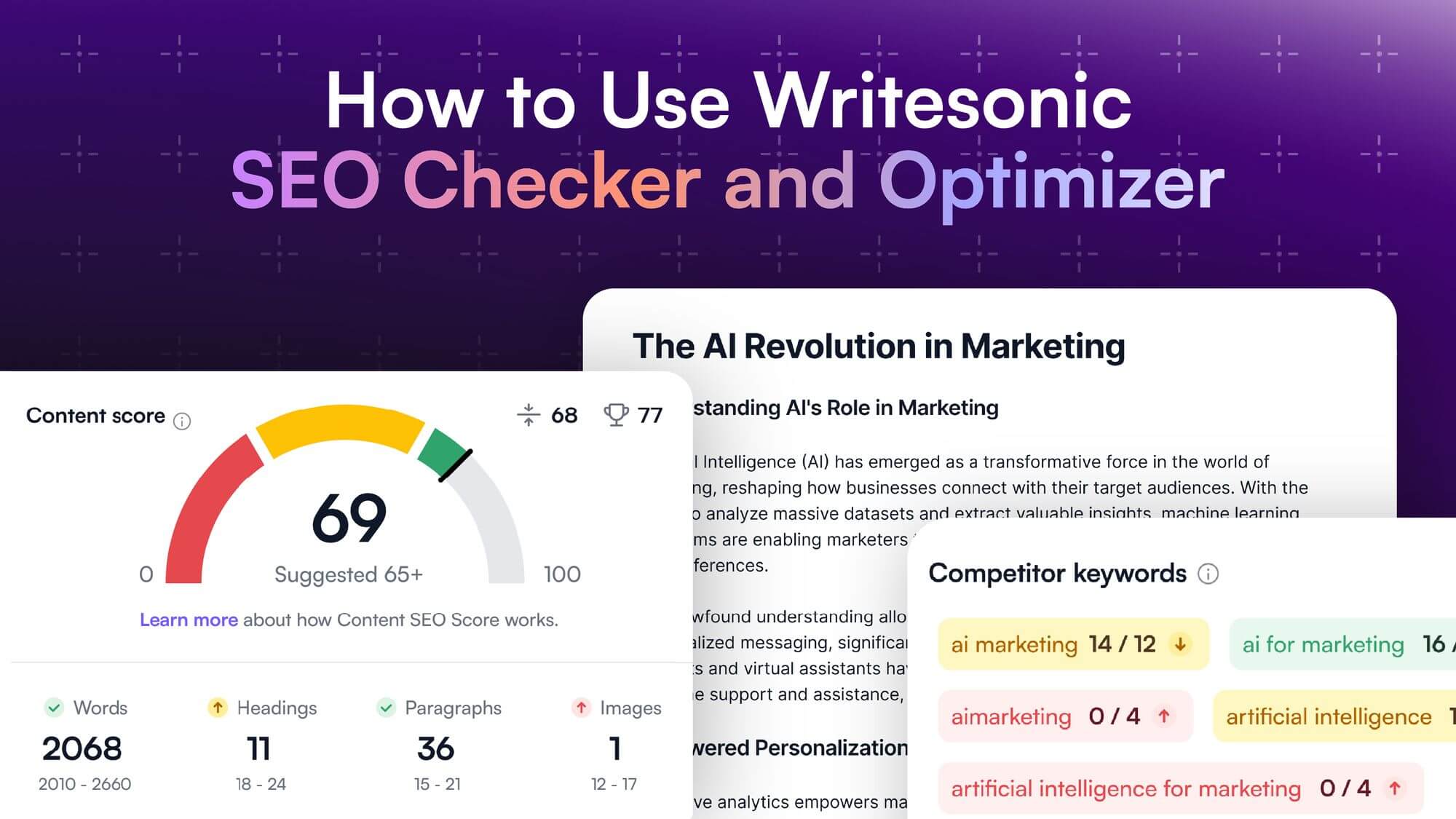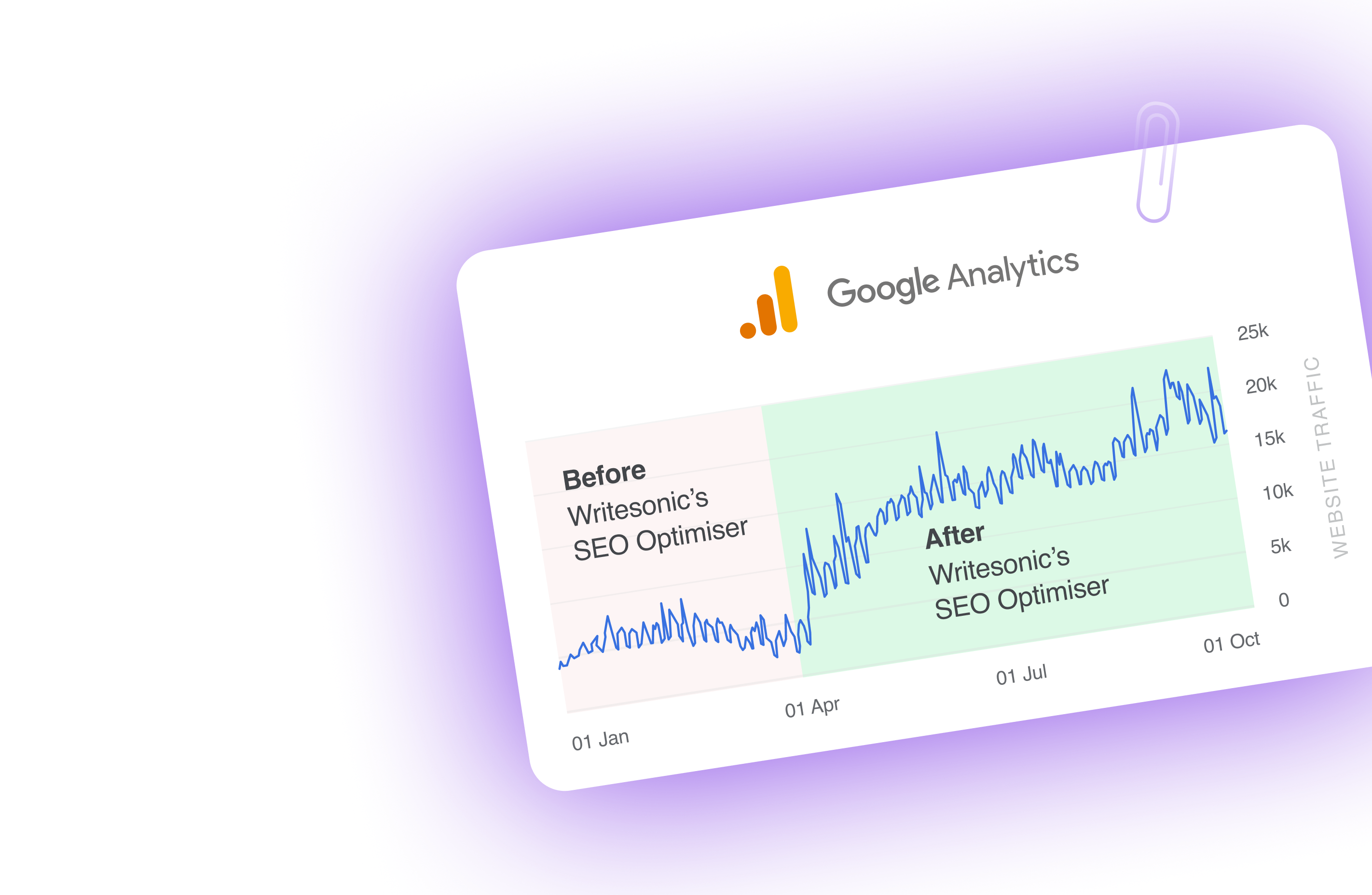Your website might rank perfectly in your home country, but what about everywhere else?
Millions of potential customers could be missing your business simply because they can’t find you in their local search results.
This is exactly where international SEO makes all the difference. We’re not just talking about translating your content (though that’s part of it).
You’ll need to think about everything from URL structures to content that speaks to local audiences. Each piece needs the right optimization to work in different markets.
So, if you’re ready to expand your reach across borders, this guide walks you through proven strategies to build an international SEO approach that actually works.
Here’s what you’ll learn:
- How international SEO helps businesses improve visibility across borders.
- The main differences between local SEO and international SEO strategies.
- Benefits of international SEO, including higher rankings and better engagement.
- A step-by-step guide to optimizing your website for global audiences.
- Best practices for creating localized content and implementing technical SEO.
- Tips for building regional backlinks and targeting international keywords.
- Methods to track and analyze your global SEO performance effectively.
What is global SEO?
A global SEO strategy involves steps to optimize your website to increase visibility in search results across different countries and languages.
International SEO goes beyond just translating your content. It involves strategic measures to make your website easily discoverable by search engines in other countries.
An SEO international strategy needs to address both multilingual and multiregional aspects of international search.
This works because search engines like Google are programmed to show results based on users’ language and geographic location.
A successful international SEO strategy includes:
- Technical setup: Implement proper URL structures and hreflang tags.
- Hreflang tags are HTML elements that tell search engines which language and geographical version of a webpage to show in search results for different users.
- Content localization: Create content that strikes a chord with local audiences.
- Market research: Analyze search patterns and competition in target markets.
- Keyword strategy: Research keywords for each language and region.
- Link building: Develop backlinks from local sources in target markets.
What is the difference between local and international SEO?
Local SEO targets a specific area, like a city or region, and is ideal for brick-and-mortar businesses and local service providers.
This strategy emphasizes optimizing Google My Business listings, managing local citations, and creating area-specific content to attract nearby customers.
In contrast, international SEO, also known as global SEO, aims to reach audiences across multiple countries or languages.
It’s suitable for businesses expanding beyond their home country and involves implementing hreflang tags, developing country-specific domains, and creating multilingual content.
In short, the differences between local SEO vs global SEO include:
Local SEO:
- Targets a specific geographic area (city or region).
- Ideal for brick-and-mortar businesses and local service providers.
- Focuses on Google My Business, local citations, and area-specific content.
International SEO (Global SEO):
- Targets multiple countries or languages.
- Suitable for businesses expanding beyond their home country.
- Involves hreflang tags, country-specific domains, and multilingual content.
The common similarity between local and international SEO is that they both aim to boost search visibility.
Why should you tap into international SEO?
International SEO opens significant opportunities if your business meets specific criteria.
For e-commerce stores shipping globally, multi-location companies, or globally recognized brands, international SEO can substantially increase your market reach.
In fact, 76% of online shoppers look for products in their native language.
Think about that for a moment.
Not to mention, the global e-commerce market is projected to grow by 18.7% annually over the next five years.
This growth presents remarkable opportunities, especially in emerging markets like Brazil, China, India, and Indonesia.
When you learn how to do international SEO effectively, you’ll be able to tap into these overlooked audiences effortlessly.
If this isn’t enough to convince you, here are a few more reasons why a global SEO strategy matters for your business:
- Access to untapped markets: Your competitors might not have optimized their content for certain countries or languages yet, giving you a competitive edge.
- Enhanced brand recognition: When users find your brand in their native language search results, it builds trust and credibility.
- Improved user experience: By providing content in local languages, you create better engagement with international visitors.
- Higher conversion rates: Content in native languages typically leads to better conversion rates.
Consider this: Google drives 92.96% of global traffic across every corner of the globe.
By implementing international SEO, you’re positioning your business to capture this massive audience potential.
Of course, tapping into international markets might not be your goal.
To understand whether international SEO makes sense for your business, ask yourself these questions:
- Do you have a significant international customer base or potential for growth in foreign markets?
- Is your offering suitable or in demand in other countries?
- What’s the competitive landscape in target international markets?
- Are you prepared to adapt your product/services and marketing strategies to different cultural contexts?
- Can your website support multiple languages and country-specific content?
- Have you researched search behavior and popular keywords in target countries?
- Does international expansion align with your overall business strategy and growth objectives?
- Have you analyzed the potential return on investment for international SEO efforts?
💡Learn how to get SEO clients and 8 strategies you can implement ASAP!
How to implement international SEO for your business
Success with international SEO doesn’t happen by accident. You need a clear plan that covers both technical setup and content strategy.
Let’s go into more detail on how to do global SEO through nine easy steps and how Writesonic can help you along the way.
But first, here’s a quick international SEO checklist you can bookmark, print, or keep handy:
1. Conduct thorough market research
Understanding your target audience is the foundation of any international SEO strategy.
Begin by analyzing traffic data from tools like Google Analytics to uncover regions where your website is already gaining traction. These insights can indicate untapped opportunities or strong existing interest in your offerings.
Next, conduct a competitor analysis of the landscape. Platforms like SEMrush’s Market Explorer can help you identify key players in your industry within target regions.
What strategies are your competitors employing? Are there content gaps you can fill?
Cultural differences also matter.
Consider user behavior, purchasing habits, and preferences that vary significantly across countries.
For instance, mobile browsing dominates in some regions, while desktop use prevails in others.
In short, the key steps for conducting international market research include :
- Review audience demographics, languages, and devices.
- Assess search demand and competition.
- Consider cultural, legal, and economic factors in each region.
You can ensure a stronger foothold in new markets by aligning your strategy with local needs and behaviors.
2. Perform region-specific keyword research and search demand
Global success starts with understanding how users search in different regions. This goes beyond translating keywords.
Instead, focus on localization—what terms are actually used in everyday searches in your target markets?
Tools like Google Keyword Planner, Ahrefs, and Writesonic’s keyword research tool can help identify high-performing terms for different countries.
Look at search volume, keyword difficulty, and user intent for your keyword research. For instance, a keyword like “vacuum cleaner” might rank well in the U.S., but in the U.K., users might prefer “hoover.”
Next, prioritize long-tail keywords and regional nuances.
For instance, people in Spain might search for “ofertas de electrónica” (electronics deals), while in Mexico, they may type “promociones de electrónica.”
Here’s an example of region-specific keyword analysis we came across:
In the US, it is more common to use the terminology “baby diaper” instead of the UK term “baby nappy.”
As a result, there’s a significant difference in search volume for the two terms in the U.S. and UK. In the UK, “baby nappy cream” has a much higher search volume than “baby diaper cream”:
But if you were to target the same keywords in the U.S, the search volume differs since “baby diaper cream” is a term more predominantly used:
Key considerations for localized keyword research:
- Analyze search terms based on language and regional dialects.
- Account for variations in spelling, cultural idioms, and local slang.
Localized keyword research ensures your content is searchable and highly relevant, driving meaningful engagement and conversions.
💡Pro tip: Try Writesonic’s SEO Checker and Optimizer to seamlessly refine your content for localized keywords.
Let Writesonic find the best-performing keywords for your topic, and the SEO checker will automatically grade your content and provide suggestions for improving your SEO.
Also read: How to Find Your Competitors’ Keywords
3. Create localized content for each target market
Localization is more than just translating your content. It’s about adapting it to resonate with your target audience’s cultural, linguistic, and behavioral nuances.
Successful localized content feels native, aligning with the values and preferences of the region it’s designed for.
Start by understanding the intent and tone your audience prefers.
For example, consumers in Japan value formal and factual language, while audiences in Brazil often respond better to conversational tones.
Adapt visuals, currencies, and even measurements.
The metric system can be used for most international markets and local currencies like euros or yen. And to build trust and relevance, incorporate region-specific examples, idioms, and cultural references.
Here are some tips to excel in content localization:
- Research cultural sensitivities and adapt accordingly.
- Collaborate with or hire native speakers to review tone and accuracy.
- Test localized content with a small audience to measure engagement.
Localized content that connects emotionally and culturally can set your brand apart, building deeper trust with international customers.
4. Manage content translations
Effective translations go beyond word-for-word conversions.
They convey meaning, intent, and tone that resonate with the target audience.
Poorly translated content can erode trust and make your brand seem unprofessional.
Here’s how to handle translations the right way:
Outsource to professional translators
The best way to ensure accurate, high-quality translations is by outsourcing content work to professional translation services.
Look for translators who are native speakers and have expertise in your industry. This ensures they understand your content’s cultural context, technical terminology, and nuances.
Platforms like Upwork, ProZ (a community for translator freelancers), or dedicated translation agencies can connect you with experienced translators.
For ongoing projects, consider building a team of freelancers or partnering with a reliable translation service.
Use AI-powered translation tools for efficiency
AI tools like DeepL can be helpful for rough drafts or getting the gist of a text.
However, these tools are not perfect and often miss context or cultural nuances. They are best used to supplement, not replace, human expertise.
💡Pro tip: Writesonic’s AI Article Writer can help streamline the process by generating blog content in 30+ languages.
Instead of relying on external writers for blog translations, Writesonic’s Article Writer can whip up blogs in different languages in minutes!
Chatsonic, an excellent ChatGPT alternative, can also help with short-form language translations as the tool works with 24+ languages.
Just enter your text into Chatsonic, and watch how it quickly translates any content while matching your desired context:
Build a centralized translation process
A streamlined workflow is essential when managing translations for multiple regions. Here are the steps to maintain for content translations:
- Create a style guide and glossary: Outline key terms, tone, and style guidelines to ensure consistency across all translations.
- Use a translation management system (TMS): Tools like Lokalise or Phrase simplify collaboration and track progress, making it easier to manage large-scale projects.
- Review and edit: Always have translations reviewed by a second native speaker to ensure accuracy and cultural alignment.
Optimize translations for SEO
Don’t stop at the text—translate and localize your SEO elements too.
Meta tags, alt text, URLs, and keywords must all reflect the target language and region.
For instance, a keyword like “cheap flights” in English could translate to “vuelos baratos” in Spanish, which may have different search volumes or user intent.
5. Choose the right URL structure
Your URL structure plays a crucial role in helping search engines and users understand the geographic and linguistic targeting of your website.
It’s the foundation for successful international SEO and directly impacts your site’s visibility and ranking in different regions.
There are three main URL structures to choose from, each with its pros and cons:
- ccTLDs (Country Code Top-Level Domains)
- Example: www.example.fr for France or www.example.de for Germany.
- Pros: Clear geographic targeting and user trust. Users immediately recognize it as a region-specific site.
- Cons: Costly to maintain and requires separate SEO efforts for each domain.
- Subdomains
- Example: fr.example.com or de.example.com.
- Pros: Easier to manage than ccTLDs, and search engines can still treat subdomains as part of the main site.
- Cons: Requires some technical expertise, and users may not immediately associate it with the region.
- Subdirectories (Recommended for most cases)
- Example: www.example.com/fr/ or www.example.com/de/.
- Pros: Easy to set up and manage under one domain, consolidates SEO authority, and is cost-effective.
- Cons: Slightly less clear for users compared to ccTLDs.
The best URL structure depends on your business goals, budget, and technical resources. For most businesses, subdirectories are the optimal choice, as they balance ease of management and SEO benefits.
6. Implementing hreflang tags
Hreflang tags are essential for signaling to search engines which language or regional version of a page to display to users.
They ensure the right audience sees the most relevant content, minimizing duplicate content issues and improving user experience.
Hreflang is an HTML attribute that communicates a webpage’s intended language and geographic region. For example, a hreflang tag for Spanish content targeting users in Spain might look like this:
<link rel=”alternate” href=”https://www.example.com/es/” hreflang=”es-es” />
Implementing hreflang tags is critical for global SEO priorities because they prevent search engines from treating translated or regional pages as duplicate content.
This also helps direct users to the most relevant version of your site, improving engagement and reducing bounce rates.
Here’s how you can implement hreflang tags for your international SEO strategy:
- Create a hreflang sitemap: Instead of embedding hreflang tags on each page, you can include them in your XML sitemap for simpler management.
- Use hreflang attributes in HTML: Place the tags in each page’s <head> section to indicate alternate versions.
- Utilize tools for automation: Tools like Ahrefs or Google Search Console can validate your hreflang setup to ensure accuracy.
Keep in mind that content duplication and canonicalization issues can occur when using hreflang tags.
Hreflang tags and canonical tags serve different purposes but can work together in international SEO:
- Hreflang tags: Guide search engines to serve users the appropriate language or regional version of a page.
- Canonical tags: Indicate the preferred version of a page when duplicate or similar content exists.
To avoid duplication when using hreflang attributes, here’s what Google recommends:
- Always self-reference the current page in the hreflang tag. Specify the canonical page in the same language.
- Match hreflang tags across all language versions. If Page A points to Page B, ensure Page B points back to Page A.
- Avoid implementing hreflang tags on dynamic or parameterized URLs, as these can confuse search engines.
Remember to maintain consistency across hreflang tags on all pages. And avoid incorrectly specifying language codes (e.g., using “en-uk” instead of “en-gb”).
Most importantly, don’t forget to consider hreflang implementation for meta elements like title tags and descriptions.
Also read: Tips to Increase Traffic and Revenue for Small Business SEO
7. Building international backlinks
Backlinks are vital for boosting your domain authority and search rankings in international markets.
However, building backlinks for a global audience requires a different approach.
The focus should be on acquiring links from high-quality, region-specific domains that are trusted by search engines and users in your target regions.
Here’s how you can identify international backlink opportunities with Chatsonic and Ahrefs
Ahrefs’ Site Explorer is an excellent tool for uncovering your competitors’ backlink strategies:
- Step 1: Enter your competitor’s domain in Ahrefs Site Explorer.
- Step 2: Navigate to the “Backlinks” report to see the domains linking to their site.
- Step 3: Use the “Country” filter to narrow down backlinks from specific regions. For instance, if you’re targeting France, filter for French domains.
Look for opportunities where competitors have backlinks from regional blogs, directories, or news sites. Reach out to these domains with your unique content offering or partnership proposal.
For a more simplified approach, Chatsonic’s AI Marketing Agent can help speed up the backlink identification process.
In the example above, we’ve asked Chatsonic’s Marketing Agent to identify the pages with the most backlinks on Ahrefs.
This helps identify link-building opportunities because:
- You can find broken links and recreate a dead page.
- See if your competition is proactively building links.
Instead of manually searching for a website’s backlink profile on Ahrefs for link-building opportunities, you can just ask Chatsonic to do all the work for you and watch how it generates instant reports in seconds.
Finally, be sure to keep tabs on your international backlink profile to measure success and uncover new opportunities. You can create a sheet that tracks the following:
- Monitor new and lost backlinks by region.
- Ensure acquired backlinks remain active and relevant.
- Spot harmful or spammy links that could impact your SEO.
8. Optimize mobile and desktop user experience
A seamless user experience across devices is critical for international SEO success.
Mobile users account for almost 60% of global web traffic, yet many businesses overlook this segment of user experience.
Here are three steps to optimize mobile and desktop experiences:
Adopt a mobile-first approach
Google prioritizes mobile-first indexing, meaning it primarily uses the mobile version of your site for ranking and indexing.
Use a responsive design to ensure your website adapts flawlessly to any screen size. Test your mobile site’s usability using Google’s Mobile-Friendly Test Tool to identify potential issues.
Optimize site speed
Slow-loading websites leads to higher bounce rates, especially for mobile users. Use tools like Google PageSpeed Insights to analyze your website’s load time. Address these key factors:
- Compress images without sacrificing quality.
- Enable browser caching to reduce server response time.
- Use a Content Delivery Network (CDN) to serve content faster across different regions.
Localize the user interface
Customize your site’s design elements for different regions. For instance:
- Use local currencies and date formats (e.g., USD/MM-DD-YYYY for the US vs. EUR/DD-MM-YYYY for Europe).
- Provide region-specific language toggles for multilingual audiences.
9. Measure and analyze performance
Tracking and analyzing your international SEO performance is essential to understand what’s working and where improvements are needed.
This involves monitoring key metrics, leveraging the right tools, and continuously refining your approach to stay competitive in your target markets.
Define clear performance metrics
Start by establishing Key Performance Indicators (KPIs) that align with your goals. If your objective is to increase visibility, track metrics like regional organic traffic and keyword rankings.
To improve user engagement, monitor bounce rates, time on page, and conversion rates. Defining these metrics provides a focused lens to measure success.
For example, if you’re targeting the German market, measure organic traffic growth from Germany and track the ranking of German-language keywords.
Leverage analytics tools effectively
Use Google Analytics to gain deep insights into regional performance. Create custom views for each target region to separate data like traffic sources, user behavior, and conversions.
For instance, if users from Japan spend less time on-site, it could indicate a need for better localization or faster load times.
Google Search Console is invaluable for monitoring search performance. Check impressions, clicks, and average position for country- and language-specific pages. If your Spanish page ranks lower than expected, examine on-page SEO or competitor performance.
Analyze user engagement regionally
Understanding how users interact with your localized content is crucial. Check whether your international pages have high bounce rates or low conversion rates.
If so, investigate the possible causes: slow load times, poor translation, or irrelevant content.
For instance, a low conversion rate in the UK might reveal a mismatch between your CTAs and local purchasing habits. Adapting these CTAs could yield better results.
Test and refine with A/B experiments
Optimization is a continuous process.
Run A/B tests to determine what resonates with your audience. Experiment with different headlines, CTAs, or layouts on regional pages.
For instance, test whether users in France respond better to formal or conversational tones.
Tools like Google Optimize can help set up experiments and provide data-driven results. These insights allow you to fine-tune your approach for maximum impact.
Finally, be sure to monitor and act on your findings.
Is organic traffic growing in your target regions? Insights from these reviews should inform your next steps—whether it’s refining keywords, improving content, or addressing technical issues.
How Writesonic can help with your global SEO priorities
Breaking into international markets can be a game-changer for your business.
Of course, navigating these complexities can feel overwhelming. But that’s where Writesonic steps in to simplify and amplify your efforts.
Writesonic’s keyword research tools and AI-driven topic research capabilities help you discover high-performing keywords for specific regions and answer common questions your target audience is asking.
With AI Article Writer 6.0, you can generate content tailored to 30+ languages in just minutes!
The tool conducts in-depth web research and provides the latest fact-checked content with zero AI hallucinations. It adapts your content to match regional nuances, saving time while maintaining authenticity.
Finally, Writesonic’s SEO Checker and Optimizer analyzes keyword density, meta tags, and content structure for different regions.
It even offers AI-driven content gap analysis to identify areas you may be missing, ensuring maximum visibility in global search results.
Are you ready to go global?
Let Writesonic guide you through every step of the journey and see how it transforms your global SEO priorities into measurable success.
FAQs
1. What is international SEO vs local SEO?
International SEO focuses on optimizing websites for a global audience across multiple countries and languages, aiming to improve search visibility worldwide.
This strategy involves the usage of appropriate URL structures, implementing hreflang tags, and creating localized content for different markets.
Local SEO, on the other hand, targets specific geographic areas, often for brick-and-mortar businesses, emphasizing optimization for local search results, Google My Business listings, and location-based keywords to attract nearby customers.
2. What is global SEO?
Global SEO, often used interchangeably with international SEO, is the practice of optimizing a website to improve its search engine visibility on a global scale.
It involves targeting multiple countries or languages, implementing proper URL structures for different markets, using hreflang tags, creating culturally relevant localized content, optimizing for various search engines beyond Google, and building a diverse international backlink profile.
The ultimate goal is to increase organic traffic and visibility across different countries and languages, expanding a business’s international online presence.
3. How do I get international SEO clients?
To attract international SEO clients, focus on showcasing your expertise through case studies and content demonstrating success with global campaigns.
Network in international business communities, both online and offline, and offer specialized services tailored to specific regions or industries with global reach.
Leverage professional platforms like LinkedIn, create multilingual content, and consider partnerships with agencies in other countries to expand your reach.
Offer free audits or consultations to provide value upfront and demonstrate your understanding of global markets. Building trust and showcasing a deep knowledge of international SEO practices are key to attracting and retaining clients in this specialized field.
4. What are the best practices of international SEO?
The best practices for international SEO include conducting thorough market research for each target country and choosing the appropriate URL structure (ccTLDs, subdomains, or subdirectories) based on your business model.
Implement hreflang tags correctly to indicate language and regional targeting, and create high-quality, localized content that’s culturally relevant to each market.
Optimize for local search engines where applicable, build a local backlink profile in each target market, and ensure proper technical SEO, including site speed optimization and mobile-friendliness.
Use local hosting or Content Delivery Networks (CDNs) to improve loading times in target countries and avoid automatic redirects based on user location.
Finally, be sure to regularly monitor and analyze performance in each market, adjusting strategies as needed. Pay attention to local keywords and search intents in each target language and region, and ensure proper translation and localization of metadata, including title tags and meta descriptions.

